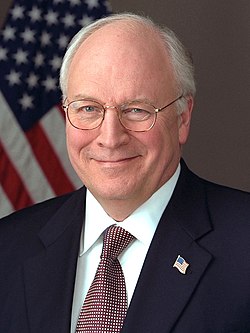| 109th United States Congress | |
|---|---|
108th ← → 110th | |
 United States Capitol (2006) | |
January 3, 2005 – January 3, 2007 | |
| Members | 100 senators 435 representatives 5 non-voting delegates |
| Senate majority | Republican |
| Senate President | Dick Cheney (R) |
| House majority | Republican |
| House Speaker | Dennis Hastert (R) |
| Sessions | |
| 1st: January 4, 2005 – December 22, 2005 2nd: January 3, 2006 – December 8, 2006 | |

The 109th United States Congress was a meeting of the legislative branch of the United States federal government, composed of the United States Senate and the United States House of Representatives, from January 3, 2005, to January 3, 2007, during the fifth and sixth years of George W. Bush's presidency. House members were elected in the 2004 elections on November 2, 2004. Senators were elected in three classes in the 2000 elections on November 7, 2000, 2002 elections on November 5, 2002, or 2004 elections on November 2, 2004. The apportionment of seats in the House of Representatives was based on the 2000 United States census.
Contents
- Major events
- Major legislation
- Enacted
- Proposed, but not enacted
- Hearings
- Party summary
- Senate
- House of Representatives
- Leadership
- Senate 2
- House of Representatives 2
- Members
- Senate 3
- House of Representatives 3
- Changes in membership
- Senate 4
- House of Representatives 4
- Committees
- Senate 5
- House of Representatives 5
- Joint committees
- Caucuses
- Employees
- Legislative branch agency directors
- Senate 6
- House of Representatives 6
- See also
- Elections
- Membership lists
- Notes
- References
- External links
This is the most recent Congress to feature a Republican senator from Rhode Island, Lincoln Chafee, who lost re-election in 2006.
The Republicans maintained control of both the House and the Senate (slightly increasing their majority in both chambers), and with the reelection of President Bush, the Republicans maintained an overall federal government trifecta.
















